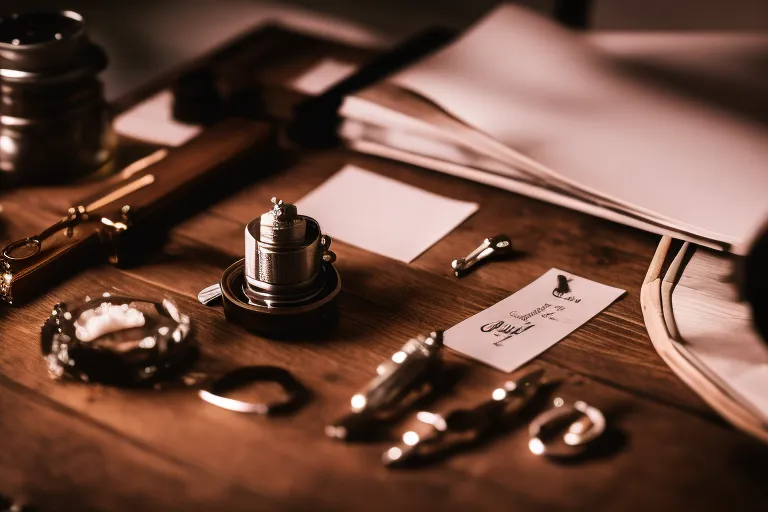Are you looking for a unique and authentic experience during your visit to Tbilisi, Georgia? Why not try your hand at learning Georgian calligraphy at a local workshop? Not only will you learn a new skill, but you’ll also gain insight into the country’s rich history and culture.
What is Georgian Calligraphy?
Georgian calligraphy is an ancient and beautiful art form that has been practiced for centuries. The Georgian alphabet, which consists of 33 letters, is one of the oldest alphabets in the world and has been designated as a UNESCO Intangible Cultural Heritage.
The script is known for its elegant curves and loops, which make it a joy to look at and a challenge to master. Each letter has its own unique shape and stroke order, making it a complex and intricate form of writing.
Finding a Workshop
There are several workshops in Tbilisi that offer classes in Georgian calligraphy. One of the most popular is the Tbilisi State Academy of Arts, which offers courses in calligraphy as part of its fine arts program.
Another option is to look for local artists and calligraphers who offer private lessons or workshops. These can often be found through word of mouth or by searching online for local art communities and forums.
The Workshop Experience
Attending a workshop in Georgian calligraphy is a truly unique experience. You’ll be surrounded by fellow artists and enthusiasts who share your passion for the art form. You’ll also have the opportunity to learn from experienced calligraphers who can guide you through the process and provide feedback on your work.
The workshops themselves are typically held in small groups, which allows for plenty of one-on-one instruction and personalized attention. You’ll start by learning the basics of the script, including the stroke order and letter shapes. From there, you’ll move on to more advanced techniques, such as shading and embellishments.
Tips for Success
Learning Georgian calligraphy can be challenging, but with the right mindset and approach, anyone can master it. Here are a few tips to help you get the most out of your workshop experience:
- Practice regularly: Like any skill, calligraphy requires practice to improve. Set aside time each day to practice your strokes and letter shapes, and you’ll see improvement in no time.
- Don’t be afraid to make mistakes: Calligraphy is a forgiving art form, and mistakes can often be corrected or incorporated into the design. Don’t let fear of failure hold you back from trying new things.
- Experiment with different tools: There are many different tools and materials that can be used in calligraphy, from traditional ink and quills to modern brush pens. Experiment with different tools to find what works best for you.
- Take your time: Calligraphy is a slow and deliberate process, and rushing can lead to mistakes. Take your time and enjoy the process, and you’ll create beautiful works of art.
The History of Georgian Calligraphy
The history of Georgian calligraphy dates back to the early development of the Georgian script, which is one of the unique alphabets in the world. Georgian calligraphy has evolved through several phases, starting from its inception in the 5th century with the creation of the Asomtavruli script. This early script was heavily influenced by religious texts and monastic traditions, as Christianity played a significant role in shaping Georgian culture and education.
Throughout the centuries, Georgian calligraphy underwent transformations, leading to the development of the Nuskhuri script in the 9th century, which later combined with Asomtavruli to form the Khutsuri script, used primarily for ecclesiastical writings. The 11th century introduced the Mkhedruli script, which marked a significant evolution in Georgian calligraphy with its more rounded and free-flowing letters, making it more accessible for secular use and contributing to the spread of literacy and literature in Georgia.
Georgian calligraphy not only served practical purposes but also became a form of artistic expression. The golden age of Georgian calligraphy, particularly during the medieval period, saw the creation of beautifully illuminated manuscripts, which were highly prized for their ornamental designs and intricate detailing.
The Cultural Significance of Georgian Calligraphy
Georgian calligraphy is not just a beautiful art form, but it also has deep cultural significance. The script is an important part of Georgian identity and has been used to express the country’s unique culture and history.
Georgian calligraphy has been used to create everything from religious texts to street art, and it has played a significant role in shaping the country’s artistic and cultural landscape.
The Future of Georgian Calligraphy
As interest in Georgian calligraphy continues to grow, there is a renewed focus on preserving and promoting the art form. The Georgian government has designated calligraphy as a national treasure, and efforts are being made to ensure that the script is taught and passed down to future generations.
In addition to workshops and classes, there are also several museums and exhibitions dedicated to Georgian calligraphy. These provide a fascinating insight into the history and cultural significance of the script and are well worth a visit.
Conclusion
Learning Georgian calligraphy at a local workshop is a unique and rewarding experience that offers insight into the country’s rich history and culture. Whether you’re an experienced artist or a beginner, there’s something for everyone in this ancient and beautiful art form. So why not give it a try and see where your creativity takes you?
